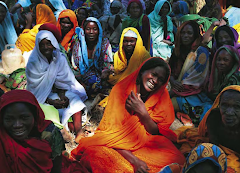WATCH BELOW
Case-Study Input:
"Well-Founded Fear is a stunning example of documentary filmmaking, beautifully crafted and brilliantly structured to allow viewers to enter into a realm of human experiences and political facts as witnesses, citizens, family members, decision-makers. It is as art, not propaganda, that it finds its great power, entering the social imagination which is so heavily informed by television. It reached three principal groups: the INS, the advocacy community, and general audiences.
The INS: Immigration and Naturalization Service: Camerini and Robertson screened the film at six INS offices. It was also seen by Commissioner Meissner. Officers had varying reactions to the film—. But it was generally agreed that the film had captured the culture of INS offices in a way it had never before been seen, and that it foregrounded the threat of “officer burnout” in this high-stress environment. The film is being used in staff training, and steps are being taken to counter burnout.
Legal and Advocacy Communities. Well-Founded Fear gave national visibility to immigration and asylum issues that are rarely seen on television, except in cases that are politically dramatic (Elian Gonzalez) or extreme (smuggled Chinese workers stranded at sea). It provided legitimacy and support to the work of advocates, like the San Francisco Amnesty worker who said the film would help her organization’s efforts, saying, “The refugee experience is so complicated and hard to convey to the public.” Broadcast and local events have produced pro bono volunteers among law students and lawyers, and the film is used in training asylum workers. Amnesty International, the American Bar Association, and refugee rights organizations are among those who have incorporated the film into their programs. The film has made is in showing immigration advocates how to most effectively advance their cause, demonstrating how persuasive an even-handed approach can be.
General audiences. The PBS broadcast of Well-Founded Fear was seen in over a million households in the U.S., bringing serious asylum and refugee issues into public view. This was compelling television: by drawing viewers into intimate stories of personal crisis, it put a human face on abstract issues, and introduced political asylum into public discourse, providing images and language that enable conversation and debate.
Impact was enhanced by a sophisticated pre-broadcast rollout strategy which was timed to engage movers and shakers first, followed by press, and then civic groups and advocacy organizations. In addition to television broadcast, the film reached general audiences through well-planned events at festivals, libraries, schools, and churches, often with the filmmakers and subject experts present. The synergistic convergence of radio, television, print press, websites, listservs, screenings, and word of mouth produced a vibrant public presence for the film, which is continuing. This is a clear example of how technologies can be used to enhance broadcast and promote on-the-ground activities.
In terms of potential long-term impact, this project has succeeded in opening new public spaces and pathways for civic dialogue; forging relationships between groups willing and able to use and sustain those spaces; and providing language, information, and opportunities for conversation around public issues. Thanks to strategic planning the film has been the subject of informed (often heated) discussion in libraries, schools, foundation offices, television stations, film festivals, living rooms, community meetings, and cyberspace.The group of institutions, organizations, and individuals assembled by the filmmakers as they went about their work, came to constitute an effective, if improvised, infrastructure that sustained the production and circulation of the film, and catalyzed its many uses." -Please See: Documentary Case-Study Information





No comments:
Post a Comment